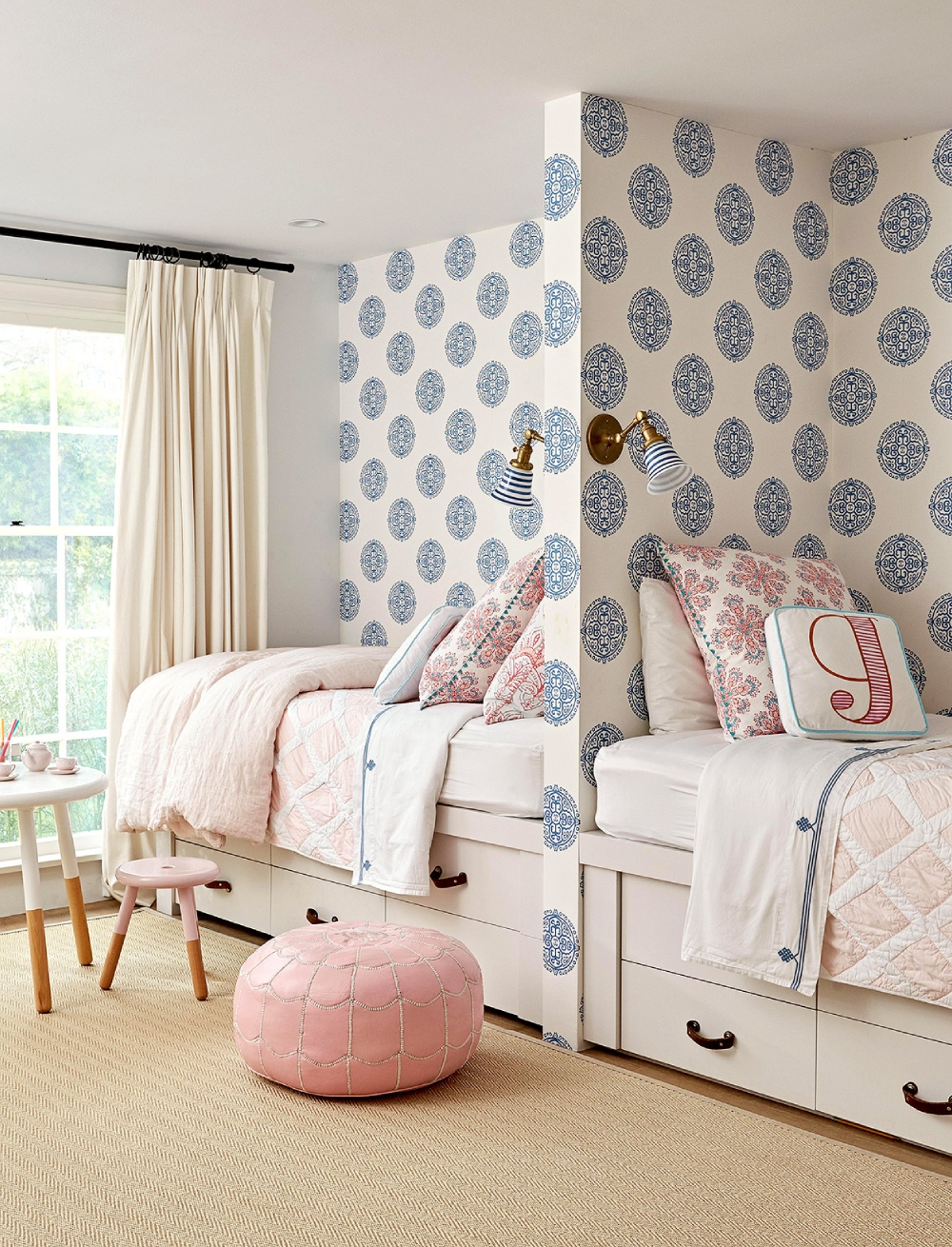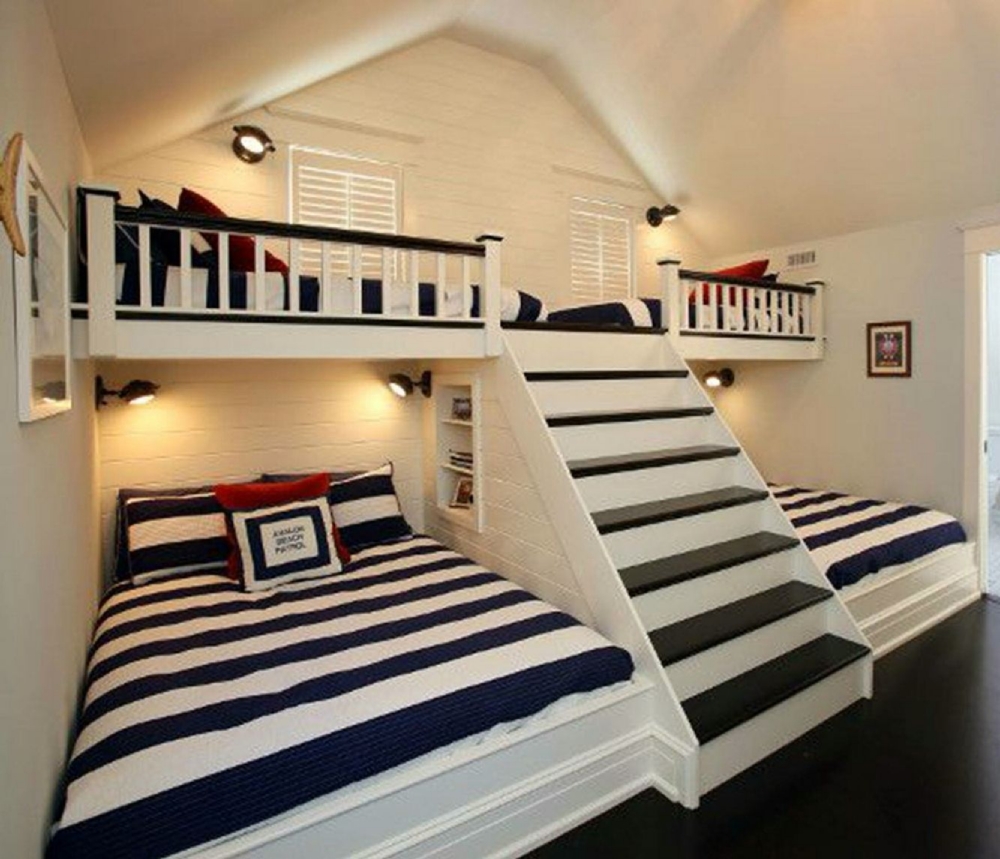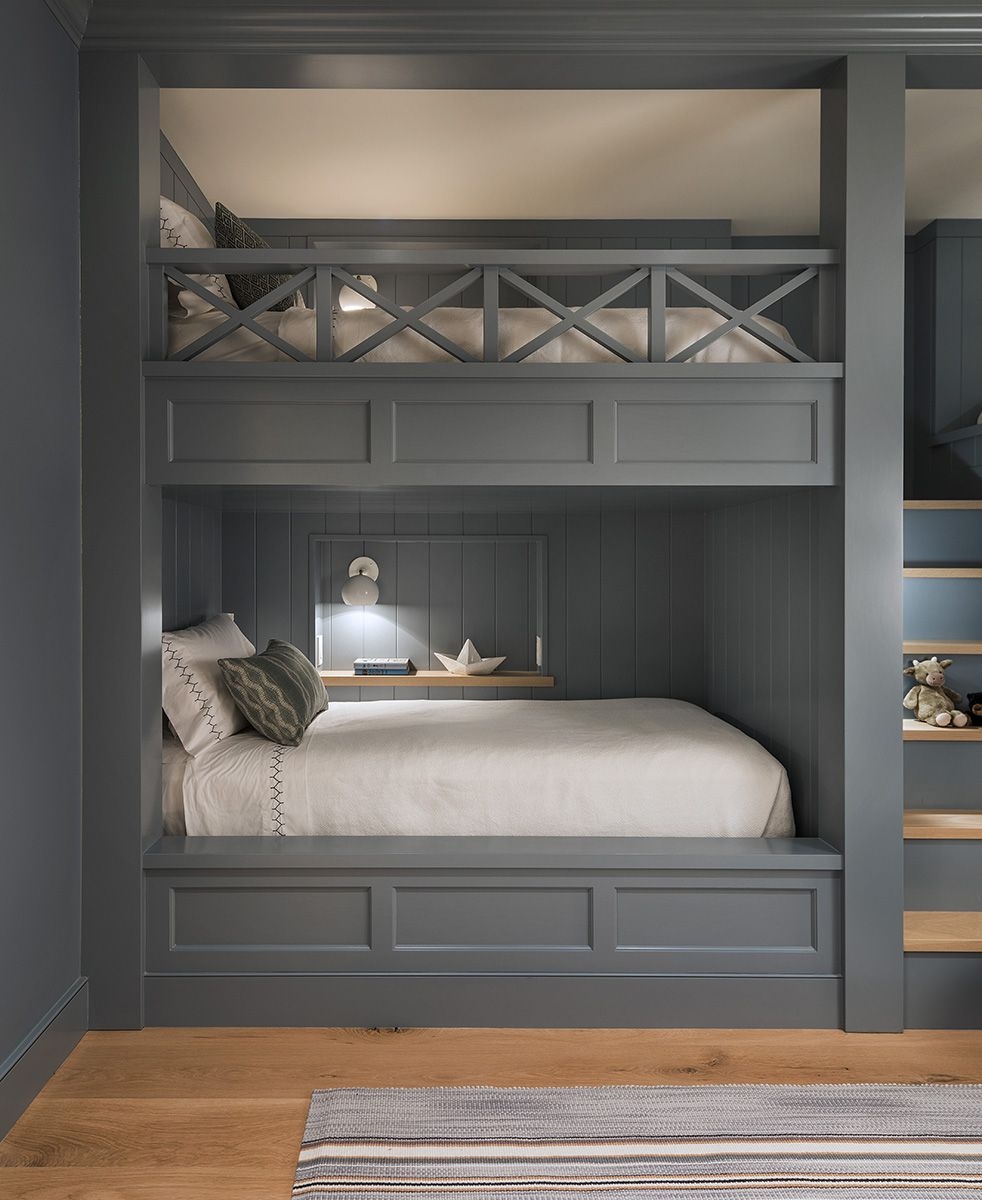Should siblings share a room?

In the ideal world, all children would have their own bedroom but many parents with larger houses still put their children in the same bedroom as they feel the pros outweigh the cons. If it is not possible to give each child their own bedroom, is there room to divide the room into two smaller units with furniture, screens or a curtain? Some of these options look amazing!
The right beds can help solve the problem.
There are some great space saving beds on the market. Bunk beds are a perennial favourite and there are bunk beds fitted with a trundle bed underneath which is great for ‘sleepovers’. Captain beds are popular as they have bookshelves and drawers underneath.High rise/loft beds are ones that are higher off the ground as they have a desk area, drawers and bookshelves underneath. Children find these fun to use and they are a novel way to maximise on space if you are trying to fit two children comfortably in a room. These beds can always be bought second-hand online from adverts in local papers and shops as children outgrow them - most 16 year olds prefer to be back at ground level!
Even if the bedroom is large enough for twin beds, it is well worth investing in an ottoman bed with cupboards underneath or some under bed boxes as it is amazing what children collect!
How well will your children share a room?
The idea of separate rooms for children is a very modern one. In many cases, children love sharing their bedroom with a sibling and it can help them sleep better and bond with their brother/sister. Ideally, both children need to be sleeping through the night before you move them in together.The first thing to consider is how well the two children or even step children get on together. Are they similar ages? If the difference is too great there will be problems with giving them undisturbed time for homework and differences in bedtimes. If they are very different characters, putting them into a confined space is likely to exacerbate their differences and a few months down the line you will be reconfiguring bedrooms again!

With clever planning sharing a bedroom can work really well for your children:
It will give them a feeling of security knowing they are not in the room alone and make them less likely to wander into your bedroom. However, if one of your children has sleep problems, sharing a bedroom will not solve that.
Even if they are young, create defined spaces for each child in the room. This can include their own book box, toy box and chair. Children love bed canopies and these can help define space too. Whilst they will have their own spaces, sharing a room naturally teaches children how to share their toys.
Teach your children that they must respect each other’s possessions. Encourage them to have a quick tidy up after tea each evening, before the start of the bedtime routine.
Make the bedroom a quiet zone. It can be beneficial to encourage your children to enjoy noisy and messy activities in the lounge or kitchen and to keep their bedrooms for quieter activities such as reading and puzzles.
Re-define bedtime. With two children sharing a room it is essential that they have a good bedtime routine so that they can wind down. Sharing bedtime stories together is fun but must be kept low key so that they feel ready for sleep.
The most important tip of all is to remember that your children will not settle immediately into sharing a room and that realistically it takes four-six weeks for them to feel happy about their room mate! Plus there are lots of spacing options available!
Chrissie x

